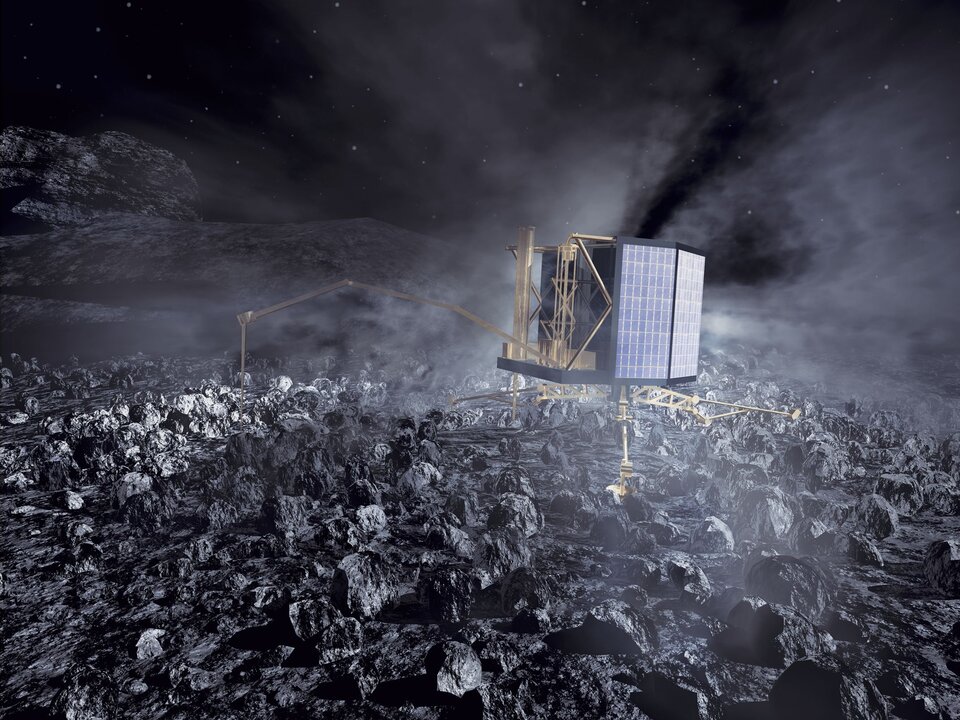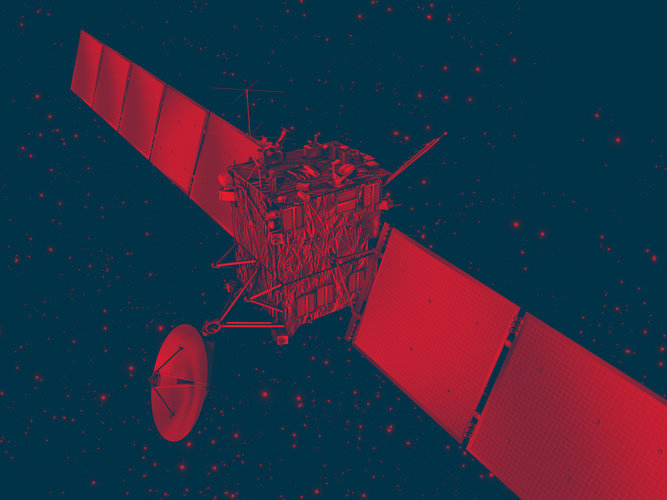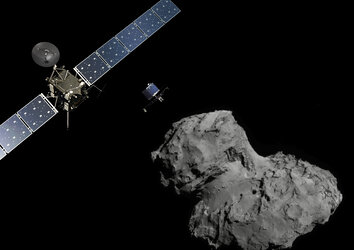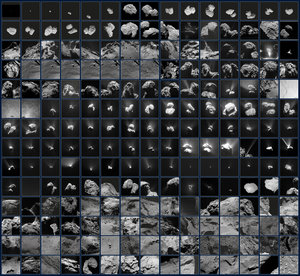Landing on powder or ice?
Rosetta’s lander Philae will do something never before attempted: land on a comet. But how will it do this, when the kind of surface it will land on is unknown?
With the surface composition and condition largely a mystery, engineers found themselves with an extraordinary challenge; they had to design something that would land equally well on either solid ice or powder snow, or any state in between.

In the tiny gravitational field of a comet, landing on hard icy surface might cause Philae to bounce off again. Alternatively, hitting a soft snowy one could result in it sinking. To cope with either possibility, Philae will touch as softly as possible. In fact, engineers have likened it more to docking in space.
Landing on a comet is nothing like landing on a large planet, you do not have to fight against the pull of the planet’s gravity, and there is no atmosphere.
The final touching velocity will be about one metre per second. That is near a walking pace. However, as anyone who has walked into a wall by mistake will tell you, it is still fast enough to do some damage. So, two other strategies have been implemented.

Firstly, to guard against bouncing off, Philae will fire harpoons upon contact to secure itself to the comet.
Secondly, to prevent Philae from disappearing into a snowy surface, the landing gear is equipped with large pads to spread its weight across a broad area – which is how snowshoes work on Earth, allowing us to walk on powdery falls of snow.
When necessity forced Rosetta’s target comet to be changed in Spring 2003 from Comet Wirtanen to Comet 67P/Churyumov-Gerasimenko, the landing team re-analysed Philae’s ability to cope. Because Comet Churyumov-Gerasimenko is larger than Wirtanen, three times the radius, it will have a larger gravitational field with which to pull down Philae.
In testing it was discovered that the landing gear is capable of withstanding a landing of 1.5 metres per second – this was better than originally assumed.
In addition, Rosetta will gently push out the lander from a low altitude, to lessen its fall. In the re-analysis, one small worry was that Philae might just topple, if it landed on a slope at high speed. So the lander team developed a special device called a ‘tilt limiter’, and attached it to the lander before lift-off, to prevent this happening.
In fact, the unknown nature of the landing environment only serves to highlight why the Rosetta mission is vital in the first place. Astronomers and planetary scientists need to learn more about these dirty snowballs that orbit the Sun.







